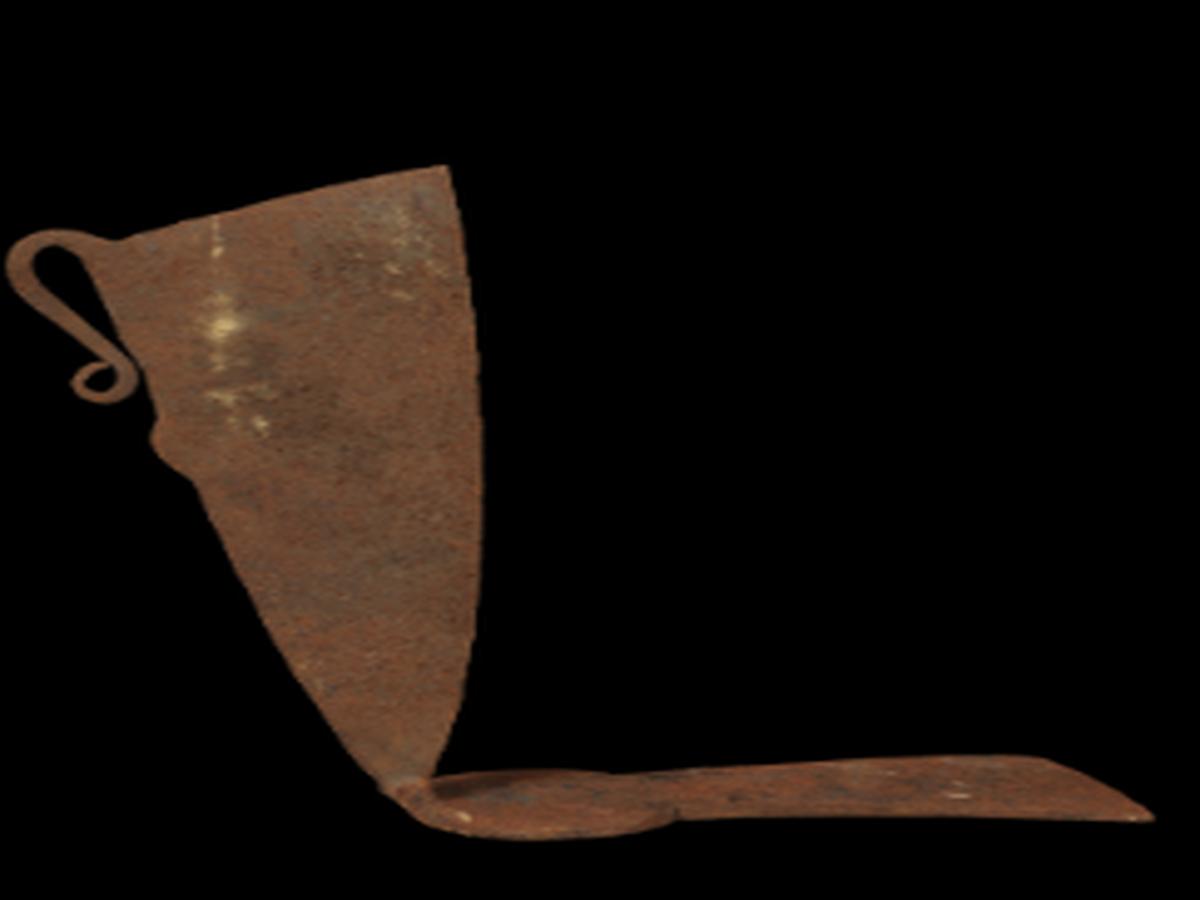State
Tribe Name
Art Type
short description
Odisha's Binjhal tribe demonstrates this iron vegetable cutter as a traditional kitchen article, symbolizing functional artistic legacy and culture. The cutter is forged of iron with a rounded base that allows it to be balanced and stable during work. The base supports the structure and acts as an anchor to the triangular blade projecting from it at right angles and forming the main cutting surface. The sharp cutting edge is triangular, with tapering edges for easy slicing, chopping, and shredding actions on vegetables, tubers, and greens, with the top being wide. The decorative nature of the S-shape at the top is interesting since it also showcases the cutter's traditional imprint. Below this motif is a raised ridge, which may add to structural reinforcement or provide a gripping surface while pushing the vegetables against the blade.
Thumbnail

Filter Postion
Right
Filter Background
Off
Theme
Filter Header Image

content
Image

description
Odisha's Binjhal tribe demonstrates this iron vegetable cutter as a traditional kitchen article, symbolizing functional artistic legacy and culture. The cutter is forged of iron with a rounded base that allows it to be balanced and stable during work. The base supports the structure and acts as an anchor to the triangular blade projecting from it at right angles and forming the main cutting surface. The sharp cutting edge is triangular, with tapering edges for easy slicing, chopping, and shredding actions on vegetables, tubers, and greens, with the top being wide. The decorative nature of the S-shape at the top is interesting since it also showcases the cutter's traditional imprint. Below this motif is a raised ridge, which may add to structural reinforcement or provide a gripping surface while pushing the vegetables against the blade.
This cutter is widely used among the Binjhal tribe in every household; it is mostly common in the villages, where floor seating and use of traditional manual implements for food preparation is the norm. The design allows the other hand to be free, either to hold the vegetable or to press and guide it against the blade. In other words, it is more than a tool-it is a testament to indigenous metal working traditions passed down from generation to generation and handcrafted by local blacksmiths knowing every aspect of traditional tribal tools.
This cutter is widely used among the Binjhal tribe in every household; it is mostly common in the villages, where floor seating and use of traditional manual implements for food preparation is the norm. The design allows the other hand to be free, either to hold the vegetable or to press and guide it against the blade. In other words, it is more than a tool-it is a testament to indigenous metal working traditions passed down from generation to generation and handcrafted by local blacksmiths knowing every aspect of traditional tribal tools.
Image Mode
landscape
promoted
On
Verified
Off
